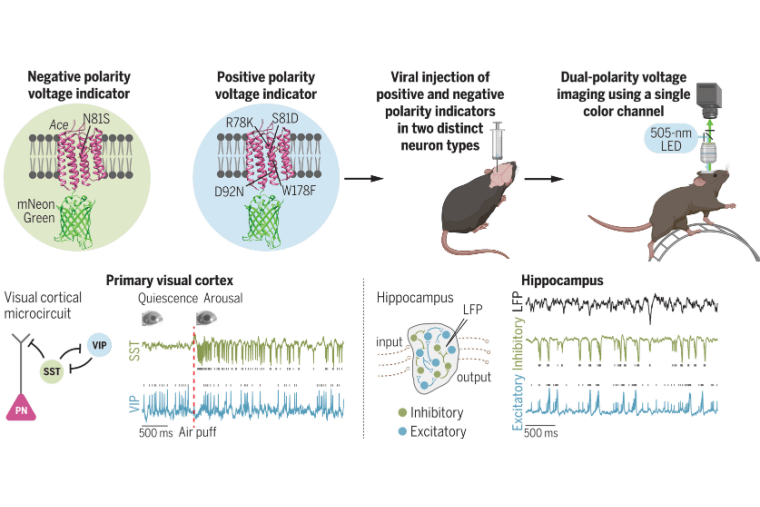Dual polarity voltage imaging reveals subthreshold dynamics and concurrent spiking patterns of multiple neuron-types

Madhuvanthi Kannan, Ganesh Vasan, Simon Haziza, Cheng Huang, Radoslaw Chrapkiewicz, Junjie Luo, Jessica A. Cardin, Mark J. Schnitzer, and Vincent A. Pieribone. Science 378 (2022): eabm8797.
Abstract
Genetically encoded fluorescent voltage indicators are ideally suited to reveal the millisecond-scale interactions among and between targeted cell populations. However, current indicators lack the requisite sensitivity for in vivo multipopulation imaging. We describe next-generation green and red voltage sensors, Ace-mNeon2 and VARNAM2, and their reverse response-polarity variants pAce and pAceR. Our indicators enable 0.4- to 1-kilohertz voltage recordings from >50 spiking neurons per field of view in awake mice and ~30-minute continuous imaging in flies. Using dual-polarity multiplexed imaging, we uncovered brain state–dependent antagonism between neocortical somatostatin-expressing (SST+) and vasoactive intestinal peptide–expressing (VIP+) interneurons and contributions to hippocampal field potentials from cell ensembles with distinct axonal projections. By combining three mutually compatible indicators, we performed simultaneous triple-population imaging. These approaches will empower investigations of the dynamic interplay between neuronal subclasses at single-spike resolution.